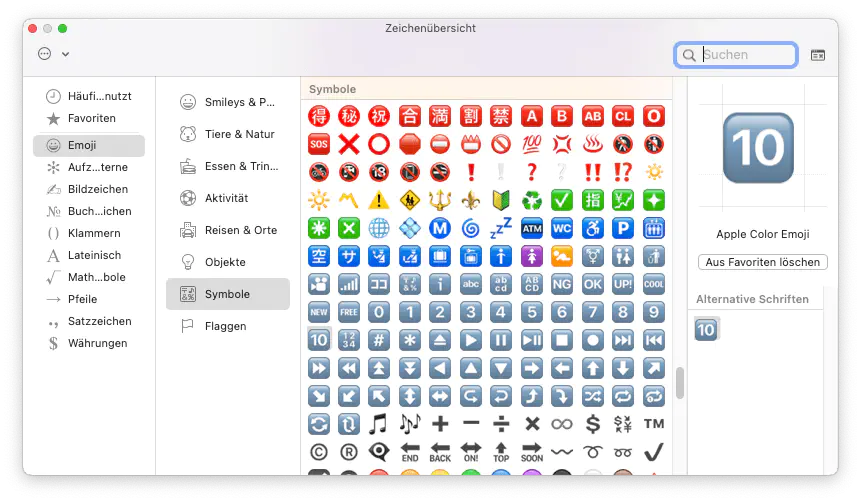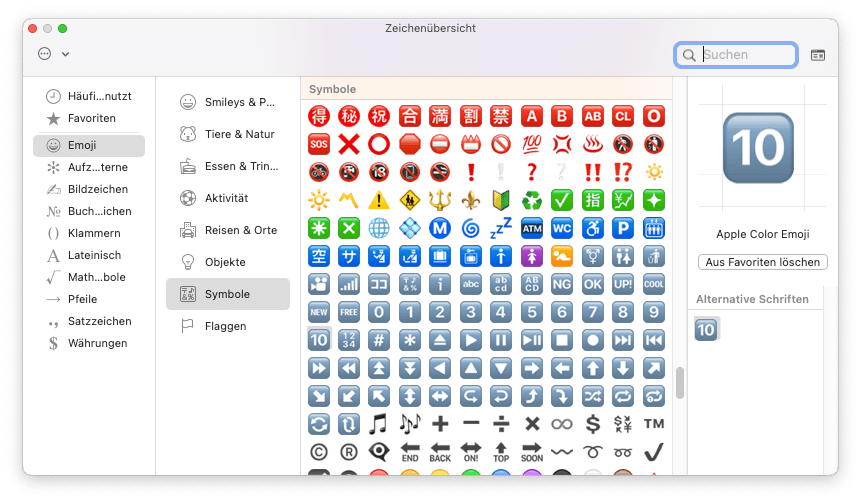Using Emojis Revisited
 Screenshot of the macOS window for symbols and emoticons
Screenshot of the macOS window for symbols and emoticonsI already reported on my learnings on the emo package in conjunction with some pull requests for interactive tutorials for the OpenIntro textbook Introduction to Modern Statistics. In the meanwhile, the book is — after some reorganization of its chapters — finished and published. I ordered the print version of the book via Amazon.
On August 13th, I started working through the tutorials and reading the new book and prepared several pull requests. There I encountered the problem of finding a special emoji without knowing the name or keyword. Meanwhile, I solved the difficulty of finding the emoji name for 🔟. There are even several solutions.
- Mine Cetinkaya-Rundel referenced the EmojiTerra.com website to me. There you can search for the symbol to get all the details of the corresponding emoji.
- With
emo::ji_name, you will get a list of 4239 names as character strings and their corresponding value as emoji. But you have to inspect the list manually, which really is not practical. (At least I did not find a better solution programmatically.) - A more practical solution is to produce a data frame with
emojis_df <- emo::jisand to inspect it via the RStudio commandView(emojis_df). There you can put the emoji symbol into the search field to get the required information. - You could also get the Unicode on macOS via the window for emojis and symbols (CMD-SHIFT-SPACE) with a right-click on the icon. You will get a bunch of localized information, including the Unicode.

Screenshot of macOS window showing keycap-10 emoji
🔟
Taste mit der Zahl 10
Unicode: U+1F51F, UTF-8: F0 9F 94 9FSummary
All in all, just options 1 and 3 are feasible in a practical manner. Either to call the EmojiTerra.com website or to use View(emo::jis) inside RStudio.